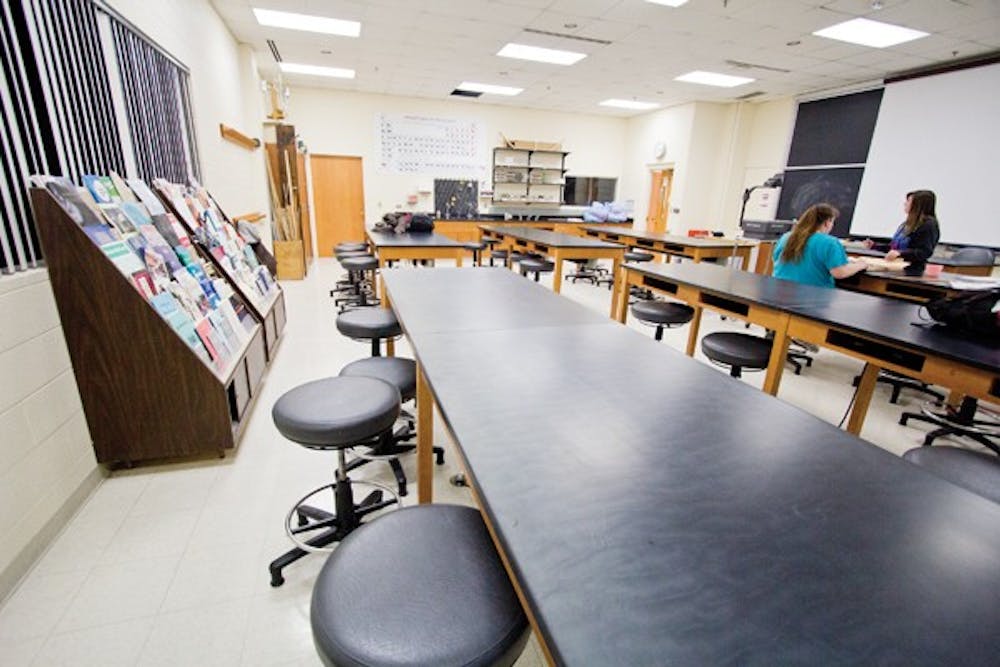Dow building rooms could receive renovations for active learning rooms
Two rooms in the Dow Science building could receive $1 million in renovations beginning this summer for use in the fall, pending approval from Central Michigan University's Board of Trustees.
Rooms 108 and 135 in Dow could be transformed from large-capacity lecture halls to smaller, discussion oriented “active learning” rooms, seating 112 students and 56 students, respectively.
Including at least one 80-inch monitor at the front of each room, a podium in the middle of the room and eight-person tables equipped with USB ports and computer monitors, the main purpose of the renovations is to promote more collaborative learning among students and faculty.
Heidi Mahon, director of student services for the College of Science and Technology, said the project is similar to the kind of active learning rooms at North Carolina State University, or other universities across Michigan, including Grand Valley State University, Northern Michigan University and Michigan State University.
The “active learning” style, relying heavily on the use of technology, forces professors to create new and innovative ways to teach their courses.
“We're proposing a lot of technology the professor can use while not tied to a bench,” she said. “Right now, professors have a podium or a bench that they stand in front of. Not many of them come down, so there's this divide between students and professors.”
Another goal of the room is to break down the divides that exist between students.
“It's not that you're not working in small groups already, but then you take that and expand it to the whole classroom,” Mahon said. “Everybody's involved and everyone's in the discussion because someone across the room might have a different point-of-view and it's nice to compare and contrast and debate.”
CMU's College of Medicine has a similar room, which Dryden freshman Zachary Nowak uses every other day for various activities including quizzes.
“The size of the tables facilitate teamwork,” Nowak said. “Each table has a microphone so you can send messages to other groups.”
Each department in the College of Science and Technology will have at least one course in either one of the rooms, Mahon said.
Physics department chairman Christopher Tycner said professor Koblar Alan Jackson will teach university physics in one of the rooms next semester.
“In physics, a lot of what you learn is problem solving,” Tycner said. “They actually do it in class in small groups. You have little experiments you can conduct in support of what you're learning.”
Although primarily unannounced to students of the College of Science and Technology, students exposed to the plans have differing views toward them.
Blake Cahill, a Marine City junior who has enrolled in mostly lecture-based courses, said the room's learning innovations sound interesting.
“I think technology like that would enhance student help and communication,” Cahill said. “If students are able to hear other people's questions, it can create brainstorming and just create more ideas.”
Farmington Hills freshman Robert Williams, said studying and learning habits of students might not be affected by the room's enhancements.
“What I've noticed is that the kids who sit in the back of the room versus who sit in the front won't use the technology as much,” Williams said. “Usually with my chemistry class, the first five rows can talk to the professor. The ones in the back of the room won't talk as much and fail classes. I feel like it wouldn't affect anything.”
The active learning rooms project has been confirmed as an agenda item at the Feb. 20 Board of Trustees meeting, according to Mary Jane Flanagan, executive assistant to University President George Ross.




